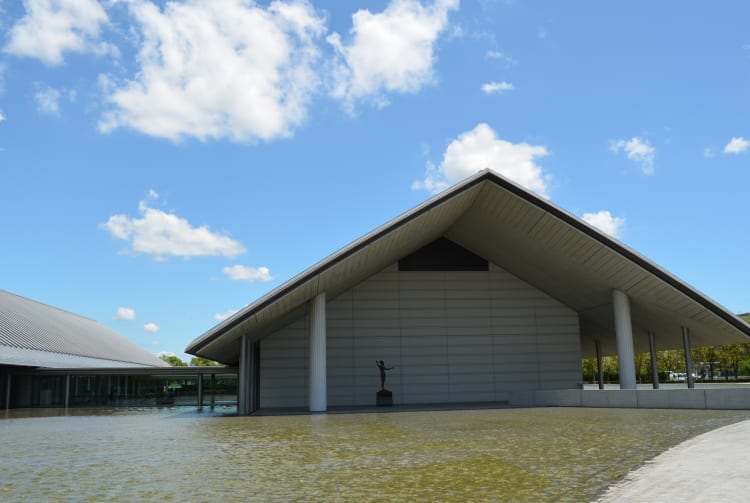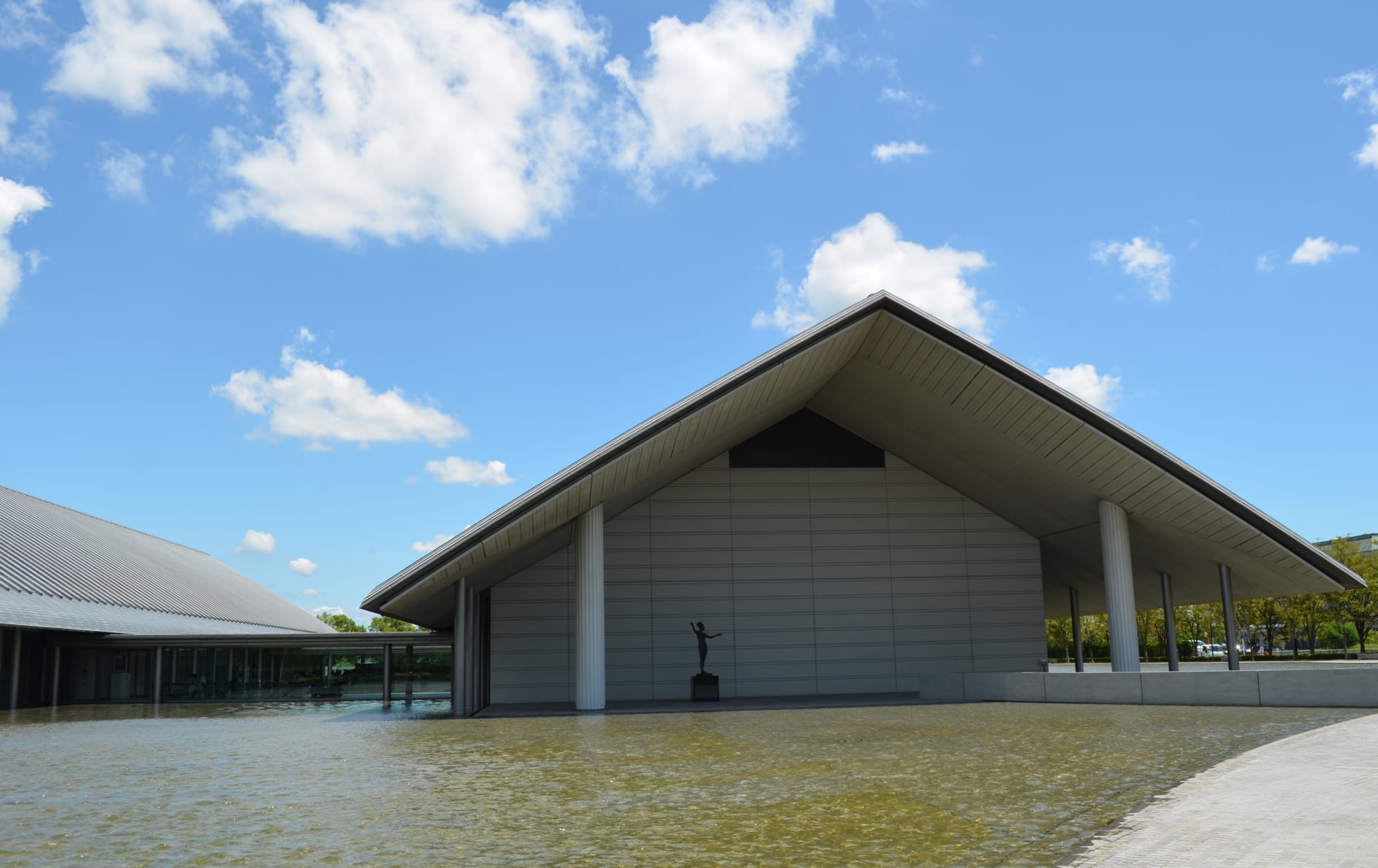The floating museum, dedicated to Nihonga paintings, bronze statues, and ceramics
They call the Sagawa Art Museum "the floating museum," since most of it is surrounded by an artificial pond garden, and the beautiful gabled-roof museum seems to float on the water.
The museum's collection focuses on a select few Japanese artists as well as on ceramics used in the tea ceremony.
Don't Miss
- The permanently displayed works of three of Japan's leading contemporary artisits
- The modern Japanese design of the museum
- The blue sky reflected beautifully in the pools on the grounds
How to Get There
You can get to the museum by train and then bus.
The Sagawa Art Museum is located in Moriyama. To get to the museum, take the JR Kosei line from Kyoto to Katata and then a 15-minute bus. You can also take the JR Biwako line to Moriyama and then a 30-minute bus. If you are traveling by shinkansen, you can connect to the JR Biwako line at Kyoto or Maibara.

The museum as a work of art
The Sagawa Museum opened in 1998 to mark the 40th anniversary of the Sagawa Express shipping company. The museum has a unique aesthetic and is designed to appear as if it is floating on water. It is an artwork in itself.
The collection is primarily of three modern Japanese artists: painter Ikuo Hirayama, sculptor Sato Churyo, and ceramicist Jikinyu Raku (formerly known as Kichizaemon Raku; the 15th artist to hold this historic title). The museum also holds a National Treasure, a temple bell from the west bell tower of Mt. Hiei .
The Japanese tea ceremony
The museum is probably best known among pottery and ceramics fans as well as among those interested in sado, the Japanese tea ceremony. It has an underwater room, and a tearoom showcasing the works of Kichizaemon Raku, the current head of a family of pottery masters dating back 450 years.
The Raku clan's pottery has long been associated with "wabi-cha." This style of tea ceremony, developed by master Sen no Rikyu, emphasizes simplicity. The Raku Kichizaemon Pavilion is unique because the entire tea room was planned and designed by the artist whose ceramics are displayed inside.
Standing in a water garden, the architecture of the museum is worth seeing. Fans love the floating design as well as the luxurious interiors. The simple aesthetic takes on different tones with the seasons.

























































